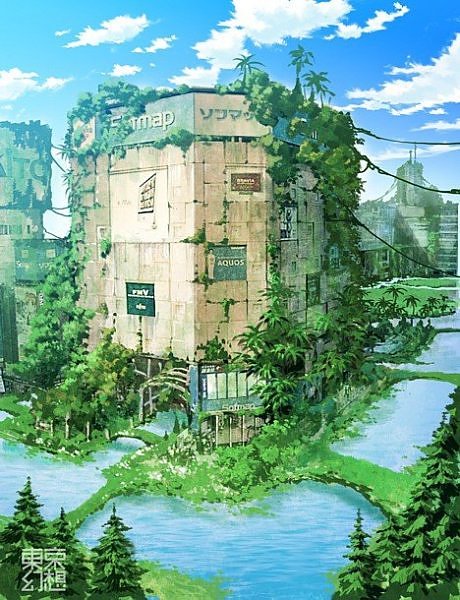There is little doubt that the effects of global warming on our
planet are already visible – in the last century the average temperature
has risen around 1 degree Fahrenheit (0.6 Celsius) – but the greatest
single danger, scientists warn, is that global warming will cause a
dramatic rise in sea levels, flooding the world’s most powerful cities
under a catastrophic deluge. Environmental Graffiti has decided to take
a look at the apocalypse humanity might be facing…
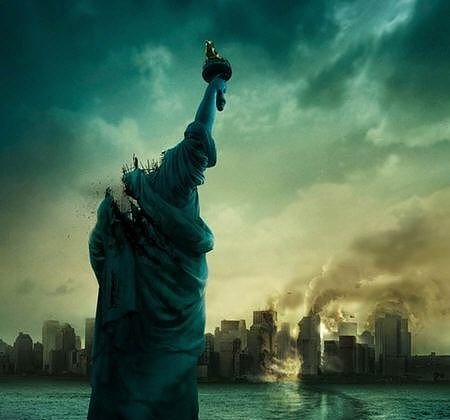
These terrifying pictures illustrate the global deluge that threatens to
engulf large sections of the world as a result of unchecked climate
change. Huge swathes of development could be submerged, including
much of the US eastern seaboard and southern UK. The effect of such
a deluge will be to drown some of the world’s most recognisable
landmarks: the Statue of Liberty in New York, Tower Bridge in London,
Tokyo’s vivid neon lights – all could potentially be swept away by a flood
caused by pollution of the Earth’s atmosphere.
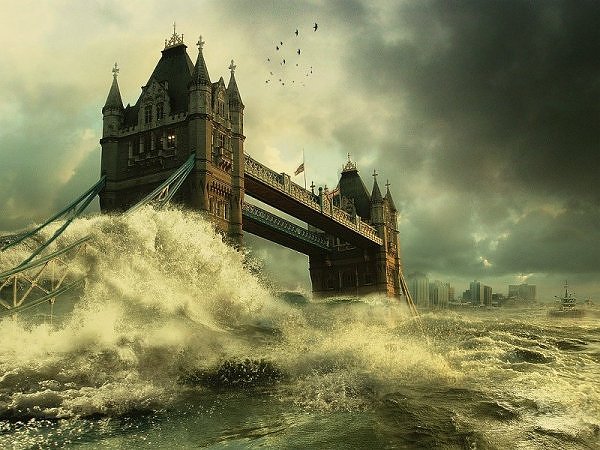
And surely it is the thought of this, a flood of biblical proportions, which
is the most terrifying of all the deadly effects of global warming.
Droughts, heatwaves, hurricanes and famine are all worrying, but
such a titanic inundation would eliminate the centres through which
these other disasters could be coped with, leaving us isolated and in
serious trouble. As they say: water may sustain life, but in this case it
may also be the end of life as we know it.
Climate change has already raised sea levels by between 4 and 8 inches
(10 and 20 cm), a significant rise in itself, but nothing compared to the
devastating rise of nearly 25 feet (7 m) that would occur if Greenland’s
enormous ice sheet melted – as scientists predict it will this century.
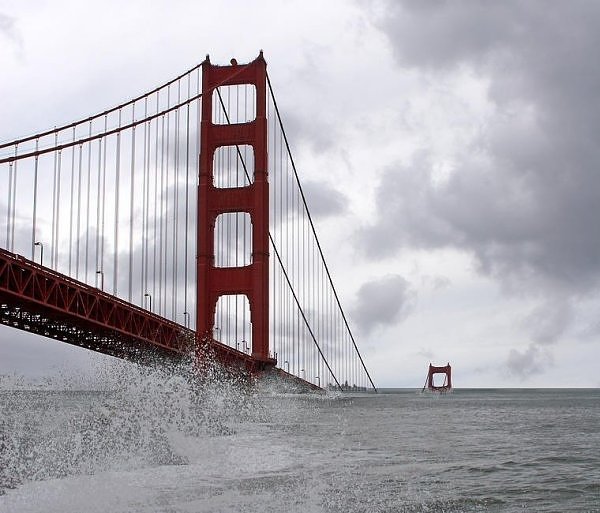
The amount of carbon dioxide in the Earth’s atmosphere has steadily
increased over the last century, largely due to large scale consumption
of fossil fuels and other pollutants, increasing the amount of heat that is
being retained in the atmosphere. Scientists believe this is one of the
prime causes of the warming effect the planet has been undergoing.
The issue is set to dominate the opening sessions of the international
climate change conference in Copenhagen this week, when scientists
will outline their latest findings on a host of issues concerning global
warming. The meeting has been organised to set the agenda for this
December’s international climate talks (also to be held in Copenhagen),
which will draw up a treaty to replace the current Kyoto protocol for
limiting carbon dioxide emissions.

Scientists also warned that higher levels of greenhouse gasses retained
in the atmosphere would lead to an increase in the amount of water held
by plants in their soil. Moisture evaporates back into the atmosphere
through tiny pores called stomata, but higher levels of carbon dioxide in
the air cause these holes to reduce in size, leading to reduced water loss
from the plant and leaving more water in the soil. The increased amount
of moisture in the soil leaves these areas extremely susceptible to
flooding, as only a small increase in precipitation is needed to push the
soil past saturation.

A temperature increase of only 3 to 4 degrees Fahrenheit would be
enough to substantially melt the ice sheet, causing a rise of well over
the 3 feet necessary to submerge the eastern seaboard (including New
York), and approaching the 6 foot level that would see a large part of
Florida flooded. Of course, low lying countries such as Bangladesh or the
Maldives would experience the same effect on a much faster scale, along
with much of the globe, as these terrifying images show.
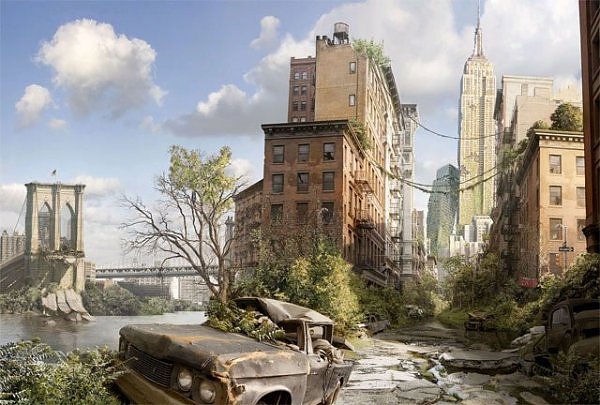
Many of the largest global cities in the world could fall prey to a flood
of epic proportions induced by this gradual warming process – from Los
Angeles to London, and New York to Nassau. There are, however, those
who are doubtful, both of the likelihood of a flood at all and of the cause
of one if it did occur. On the latter point, many claim that an increase in
underlying volcanic activity, coupled with the Earth’s natural cycle of
heating and cooling, is the more likely explanation for any increase in
global temperature. Yet this argument appears to disintegrate when we
consider that the sheer rate of current temperature increase is
unprecedented, suggesting unnatural causes. Climate change, it seems,
is a fact, and is, unfortunately, here to stay.
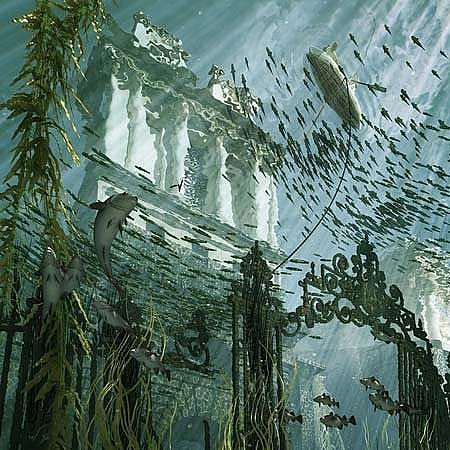
And whilst these amazing fantasy pictures paint a pseudo-romantic
(and almost touching) portrait of the Earth’s ruins reclaimed by water –
one of nature’s great elemental forces – the reality would, of course, be
nothing as comfortable to our dispositions. Centuries of culture would be
consumed; great monuments to past causes, complex transport systems
and age-old centres of commerce all destroyed, not to mention hundreds
of thousands of miles of residential housing. Frightening pictures are one
thing, but the terrifying reality of the effects that might be induced by
atmospheric pollution is quite another.
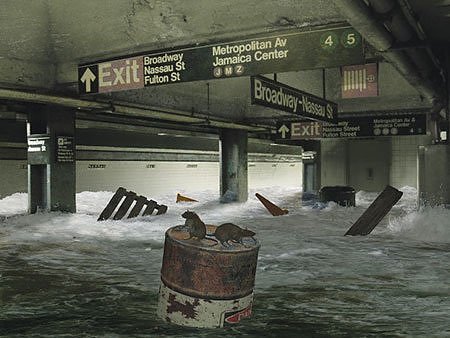
And because here at Environmental Graffiti we’re sure that, like us, you
don’t want to see the planet go under, we urge you to consider these
pictures next time the issue of global climate change or atmospheric
warming comes up. The reality of melting ice caps may come sooner
than you think, and its effect may be deadlier than you can imagine.
Let’s hope, for all our sakes, the scientists are proved wrong – but with
a heavy heart, we must admit that somehow, we don’t think they will be.
